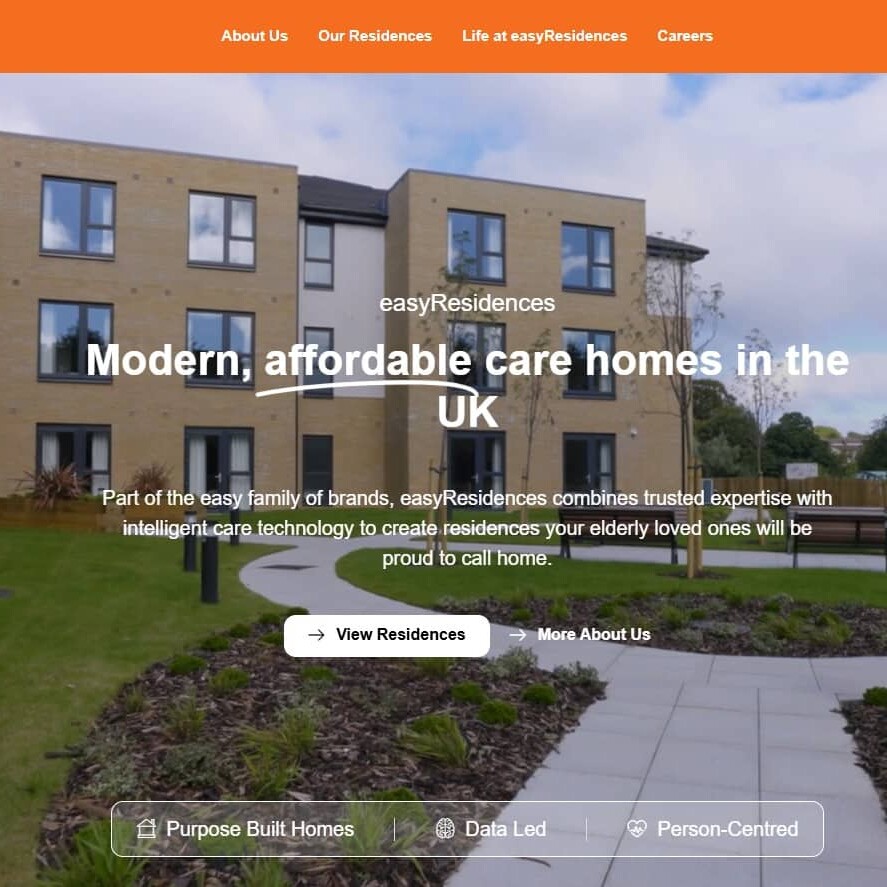Where would you like to live in later life? An interesting question which many of us do not even consider until we have reached retirement age. Here the team at Carless+Adams discuss how location, environment and design can ensure care is a choice.
Where would you like to live in later life?
An interesting question which many of us do not even consider until we have reached retirement age. Prior to retirement, we take time to choose where we live often taking into account location of relatives, proximity to work and local schooling. Deciding where we would like to live later on in our lives, however, is often made for us as ill health occurs. This choice, along with the decision to move into supported living or a care home, should be made earlier than it is today, so that we can enjoy time rather than have concerns over maintenance of homes, inadequate facilities and having feelings of loneliness and isolation.
Being in a familiar environment is imperative for positive mental wellbeing. Many choose to retire to a location where they have a personal connection with, such as where they grew up. People also choose to relocate (if necessary) closer to family to bring the family together and spend time with grandchildren. Living near an existing support network nearby is vital. Family and friends are able to provide this support, especially as one grows older and the need for emotional support and decision-making assistance is needed.
Specialist housing for later living is experiencing an increase in growth due to the greater demand and shift in demographics with the increase in our ageing population in the UK. Many age at different rates depending on their underlying health. You may have a sprightly 75-year-old who is still in employment and you may have a less physical 70-year-old who needs some support. Both can benefit from the location of the senior living accommodation they have chosen if their differing needs are considered when designing the immediate environment.
When designing appropriate housing there are many factors that contribute to its success, with an important one being where it is located. Specialist housing must not only be functional to suit its senior residents but have access to adequate facilities nearby and allow for integration into the community successfully. Whether this is by having a town centre and shops within walking distance, good transport links, a broad range of leisure and social facilities close by e.g. library, bakers, hairdressers etc, access to local carers to provide domiciliary care when required or being located near to a more specialist later life care facility where the residents can eventually move when they are less able; location plays a very important role. By recognising that people in their retirement have more free time and disposable income to take part in leisure activities and to socialise, the location of their supported living or care home and its access to public transport and local amenities is very important. Ensuring that housing solutions enable our elderly population to lead fulfilling lives is of great importance and forms the basis for many of our designs at Carless + Adams.
A Senior Living Survey conducted by Knight Frank in 2019 provides a useful insight into what the senior population requires in terms of their place of residence. As stated in their survey 56% believe location is the most important factor when choosing a property. 60% said their last move was within 10 miles of their previous property and 75% of respondents stated that living in a senior living scheme close to the town centre was important to them, with 45% preferring to be able to walk into the town centre. There are many reasons why people believe location to be important and this needs to be considered at the very early stages of a specialist housing project. Being integrated into a community via a mixed use of urban fabric allows people to mix and socialise with different types of people of every age range. Intergenerational living in care homes and supported living accommodation is on the rise. At Carless+Adams we believe strongly in the physical and mental benefits for all age groups involved and have been fortunate to design such schemes through to approval stage of planning permission. Previously we have written a blog on intergenerational living illustrating the positive effects of such living.
Throughout the COVID pandemic we have seen the closing of high street shops as shoppers switch to online retail and office use has decreased. Technology has been embraced and has illustrated that many careers can continue whilst working from home. Hybrid working and hot desking has become the norm where part of the week is spent working from home and some in the office, freeing up the need for one desk per employee. This creates an interesting debate – does this provide an opportunity to develop more specialist housing in town centres? If there is substantial downsizing of offices in town centre locations, can this be converted for appropriate age friendly housing? Many office buildings can provide a good basis for the conversion into housing with lifts already incorporated, large areas of glazing to allow light to flood in, large expanses of open plan floor areas that can be divided into units, outside piazza space, access to amenities and services etc. John Lewis has already started this movement by applying for planning to convert some of its department stores into affordable housing, following store closures as a result of the coronavirus pandemic. It is something to consider to keep our towns and cities alive now that workers are not there in the same numbers.
Once location has been identified the immediate environment also needs to be considered. An aspirational, age friendly, outside area will encourage an active lifestyle. Including attractive green spaces will provide a connection to nature which is well documented as beneficial to a calm and positive state of mind. Level walkways without thresholds will encourage all to make use of the outside space. The environment will promote social interactions to occur, whether planned or spontaneous, which will naturally develop into a community network.
The Government’s Planning for the Future white paper on planning reform published in August 2020 earlier this year calls for radical reform of the planning system “unlike anything we have seen since the Second World War”. The Ministry of Housing has positively stated that for the “first time in history” beauty will be at the heart of the planning process. The White Paper and policy intends to support communities in producing binding design codes for their local area – thereby ensuring that design quality and existing local character are recognised and conserved.
Enabling the elderly to live in an attractive and inspiring setting is something very close to our hearts at Carless + Adams. We create inspiring places where the older population can thrive. In Knight Frank’s 2019 survey, some 37% of respondents over 65 find the prospect of living in a senior living scheme attractive. It would be fantastic to increase this figure by creating more affordable options and remove the stigma that retirement housing has for many. Looking beyond the building fabric and into the wider setting of specialist housing is a very important way in which we can make senior living an attractive option, enabling care to be a choice – not a necessity – for many people as they grow older.


